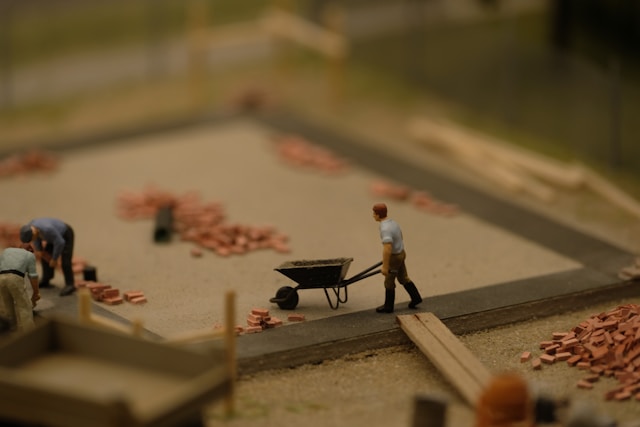We are hearing from many of colleagues that while new structures and ways of working have been introduced, the reality is… they haven’t yet had time to fully embed them. The day-to-day workload might be feeling intense and, for some, their perception is that they’re still doing everything they were doing before, but with fewer people. So how do you help your team make space for change when you’re all already stretched?
Here are some practical suggestions to help you and your team embed new ways of working without it feeling like “just another thing”, but instead be a positive step forward.
1. Start small and build in
Embedding change doesn’t have to mean big workshops or long meetings. It can be small, intentional shifts.
- Use existing meetings to reflect on what’s working and what’s not.
- Try one new habit or tool at a time e.g., a shared task board, a weekly priorities check-in.
- Ask: “What’s one thing we could do differently this week?”
2. Let go of what no longer serves you
When everything feels urgent, it’s hard to see what’s important. But not everything can, or should, continue.
A thought from one of our Managers:

“We’ve introduced new ways of working, but people are still doing everything they were doing before, just with fewer hands. It’s not resistance to change, it’s exhaustion. We need to help people see what they can let go of, not just what they need to take on.”
You can review team tasks and ask:
- What can stop? What can be reduced? What can be paused?
- Use Positive Performance Conversations to explore this with individuals.
- Be brave about letting go of legacy processes that no longer add value.
3. Make time visible
Often, it’s not that people don’t want to embed change, it’s that they don’t feel they have permission to prioritise it.
- Block time in calendars for reflection, planning, or process improvement.
- Encourage “working on the work” not just doing the work.
- Celebrate when people make space for change, even in small ways.
4. Share the load
You don’t have to do it all yourself. Embedding new ways of working is a team effort.
- Invite team members to lead on small improvements.
- Create space for peer learning, and share what approaches are working.
- Use existing networks or communities of practice to share ideas.
5. Be kind to yourself and others
Change takes time. If you’re feeling behind, you’re not alone.
- Acknowledge the pressure and the progress.
- Focus on momentum, not perfection.
- Remind yourself: embedding change is part of the work, not separate from it.

It’s work in progress…
6. Revisit team purpose and priorities
This is a valuable moment to step back and ask: What are we here to do now? Not to redesign the team, that’s already happened, but to redefine how the team works within the new structure.
- Reflect on how the restructure has impacted your team’s priorities.
- Consider what’s changed in terms of capacity, focus, and expectations.
- Be selective: where can your team add the most value now?
Tools like the Team Canvas can help facilitate these conversations, offering a structured way to explore purpose, roles, values, and ways of working. You might also want to join our upcoming Harnessing Employee Voice Workshop, which is designed to help teams co-create new ways of working together.
This kind of reflection doesn’t need to be time-consuming — even a short conversation can help clarify direction and reduce the pressure to “do it all.”
Want to explore this further?
Here are some useful resources:
Book onto the Introduction to Continuous Improvement Workshop (team sessions are available – please contact us if this is of interest.
Leadership and Management Toolkit – Managing Workload and Transition Tool
Harvard Business Review – Stop Doing Low-Value Work
Harriet Robb, Learning and Organisational Development Team
 People, Culture and Inclusion
People, Culture and Inclusion Juliet Flynn
Juliet Flynn 149
149


